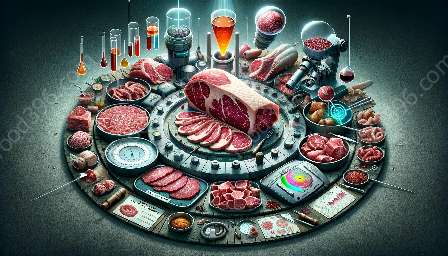Meat sensory analysis techniques play a crucial role in understanding the quality of meat products and consumer preferences. In the world of meat science and the food & drink industry, these techniques provide valuable insights into the sensory attributes of meat, helping to improve product development and consumer satisfaction.
The Importance of Meat Sensory Analysis
Meat sensory analysis involves the evaluation of meat quality based on sensory characteristics such as appearance, aroma, flavor, texture, and juiciness. These attributes are essential factors that influence consumer perception and acceptance of meat products. Therefore, understanding and effectively measuring these sensory attributes are critical for meat producers and researchers in creating high-quality, desirable meat products.
Tools and Methods for Meat Sensory Analysis
Various tools and methods are employed in meat sensory analysis to assess the sensory attributes of meat. These include:
- Sensory Panels: Trained sensory panelists are often used to evaluate the sensory attributes of meat products. These individuals are trained to assess and describe the appearance, aroma, flavor, and texture of meat using standardized sensory evaluation techniques.
- Instrumental Analysis: Instrumental techniques such as texture analysis, gas chromatography, and electronic nose are utilized to objectively measure sensory attributes of meat, providing quantitative data on attributes such as texture and aroma.
- Consumer Testing: Consumer sensory panels and surveys are conducted to understand consumer preferences and perception of meat products. This involves evaluating consumer response to different sensory attributes and determining the factors that drive consumer acceptance.
Understanding Meat Quality through Sensory Analysis
Meat quality is a complex concept influenced by various factors including production practices, breed, processing, and storage. Sensory analysis helps in assessing different aspects of meat quality, allowing producers to identify areas for improvement and develop strategies to enhance meat quality.
Impact on Product Development and Innovation
The insights gained from meat sensory analysis play a pivotal role in product development and innovation within the food & drink industry. By understanding consumer preferences and sensory attributes of meat, producers can develop new products, optimize existing ones, and tailor their offerings to meet consumer needs and expectations, ultimately driving market success.
Future Trends in Meat Sensory Analysis
Advances in technology and research are continuously shaping the landscape of meat sensory analysis. Emerging trends such as digital sensory evaluation tools, integrative data analysis, and personalized sensory testing are paving the way for more efficient and comprehensive sensory analysis, offering new opportunities for understanding and addressing consumer needs and preferences.
Conclusion
Meat sensory analysis techniques are invaluable in comprehending the sensory attributes of meat, driving quality improvement, and meeting consumer demands. By leveraging these techniques, the meat science and food & drink industries can continue to evolve and innovate, delivering exceptional meat products that resonate with the discerning palates of consumers worldwide.



















